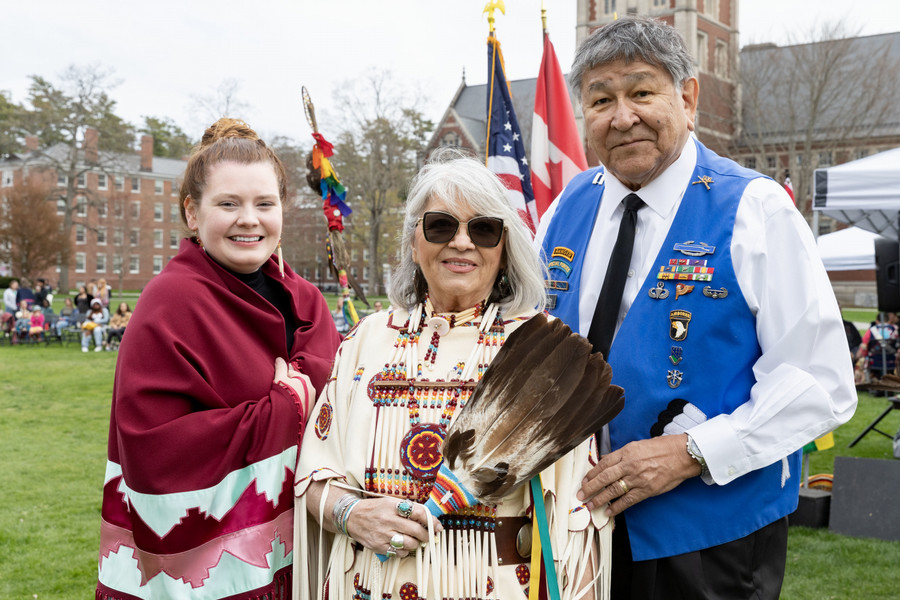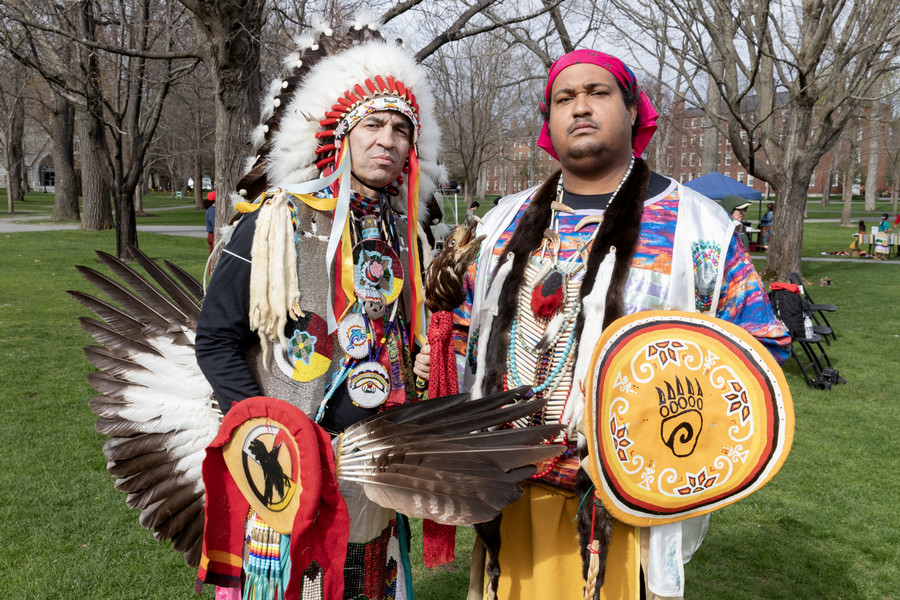Saluting Native Life
By Tom Porter. Photography by Andrew Estey.There were unfamiliar sights and sounds on the Bowdoin Quad recently as Indigenous groups from Maine and across the continent gathered for a tribal powwow.
“A powwow at heart is a celebration to honor traditions passed down through generations,” said Kailey Bennett ’14, one of the event’s organizers.
The May 4 powwow, she explained, was a chance for members of different tribal groups to get together and showcase their cultures through song, language, singing, dancing, and drumming.
The event featured at least fourteen First Nation and Native American groups. This included all the Maine tribes—the Maliseet, Mi'kmaq, Passamaquoddy, and Penobscot, known collectively as the Wabanaki nations—and populations from further afield, including the Cherokee and Comanche Nations in Oklahoma and the Cow Creek Band of Umpqua from Oregon.
Like all powwows, explained Bennett, this one started with a grand entry, as all the dancers paraded through the “powwow circle,” lining up in age range, from youngest to oldest. “It’s one of most moving parts of a powwow to see all communities represented,” said Bennett. “The opening procession also included a veterans’ song and a flag song, as well as an opening prayer, which was given by two elders.” One of those elders was Bennett’s grandfather, who delivered his words in the Kiowa language.




Bennett now works at Harvard University’s Native American Program, where she supports Indigenous students. She herself is a citizen of the Cherokee Nation, growing up in Oklahoma, where her ancestors have lived since the tribe’s forced removal of the 1830s, she explained. Bennett’s grandparents, who have been attending powwows for decades, flew in from out West to join her in Brunswick. She said it has been useful to be able to “lean on” her grandmother for advice when it came to planning this event. It was also fascinating to hear her grandparents’ take on how eastern powwows differs from those in Oklahoma, for example, where the drumming and dancing is much slower.
For the past several months, Bennett has been working with students from the Native American Student Association and Bowdoin’s Office of Inclusion and Diversity to organize Bowdoin’s first powwow. Bringing this event to her alma mater was a meaningful moment for Bennett, who attended her first powwow at Harvard in 2012 as a Bowdoin student. “I remember thinking how exciting it would be if Bowdoin could do something like this.” Now this has happened, Bennett said it feels like a “full circle” moment.
““A powwow at heart is a celebration to honor traditions passed down through generations.” ”
—Kailey Bennett ’14





“The powwow was a great opportunity to connect the Bowdoin community with the larger community of Native people in Maine, Atlantic Canada, and further afield,” said Senior Vice President for Inclusion and Diversity Benje Douglas. “It was so exciting to see a multigenerational event on campus with just about every part of the life cycle represented and enjoying time together. Although our primary focus as a community is our contemporary students, we must always keep our eye on the past and the future, and I hope that is what the powwow represented,” he added.